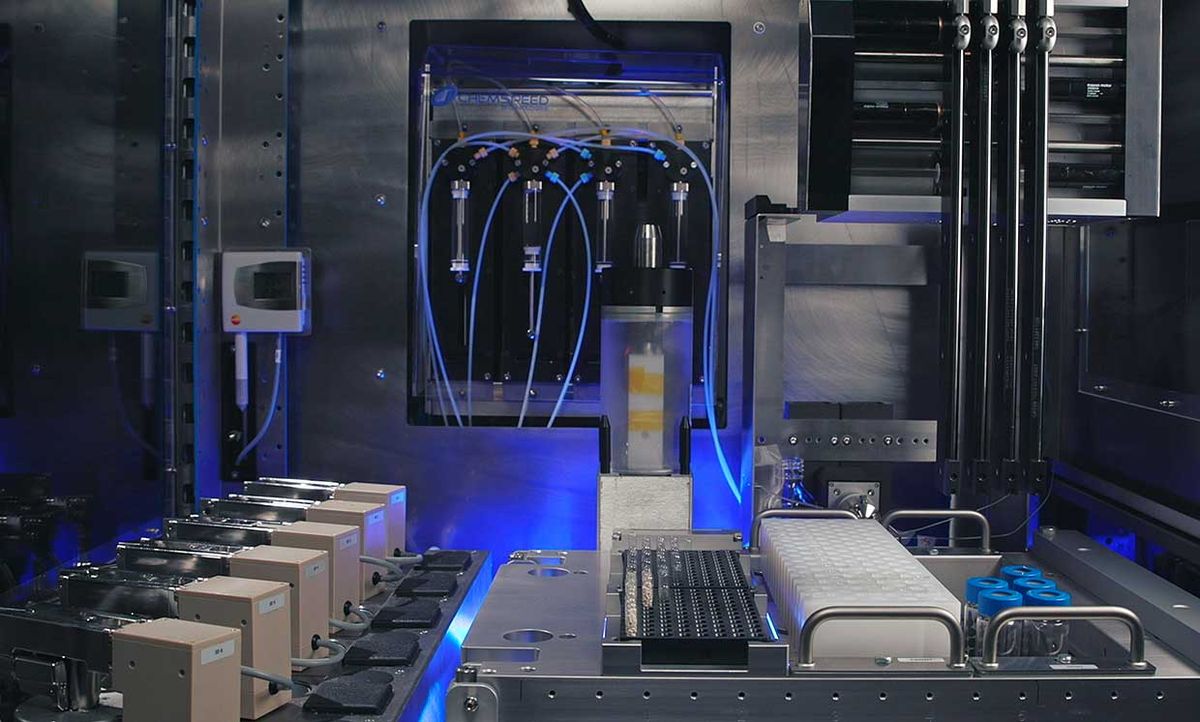IBM must be brimming with confidence about its new automated system for performing chemical synthesis because Big Blue just had twenty or so journalists demo the complex technology live in a virtual room.
IBM even had one of the journalists choose the molecule for the demo: a molecule in a potential Covid-19 treatment. And then we watched as the system synthesized and tested the molecule and provided its analysis in a PDF document that we all saw in the other journalist’s computer. It all worked; again, that’s confidence.
The complex system is based upon technology IBM started developing three years ago that uses artificial intelligence (AI) to predict chemical reactions. In August 2018, IBM made this service available via the Cloud and dubbed it RXN for Chemistry.
Now, the company has added a new wrinkle to its Cloud-based AI: robotics. This new and improved system is no longer named simply RXN for Chemistry, but RoboRXN for Chemistry.
All of the journalists assembled for this live demo of RoboRXN could watch as the robotic system executed various steps, such as moving the reactor to a small reagent and then moving the solvent to a small reagent. The robotic system carried out the entire set of procedures—completing the synthesis and analysis of the molecule—in eight steps.

In regular practice, a user will be able to suggest a combination of molecules they would like to test. The AI will pick up the order and task a robotic system to run the reactions necessary to produce and test the molecule. Users will be provided analyses of how well their molecules performed.
Back in March of this year, Silicon Valley-based startup Strateos demonstrated something similar that they had developed. That system also employed a robotic system to help researchers working from the Cloud create new chemical compounds. However, what distinguishes IBM’s system is its incorporation of a third element: the AI.
The backbone of IBM’s AI model is a machine learning translation method that treats chemistry like language translation. It translates the language of chemistry by converting reactants and reagents to products through the use of Statistical Machine Intelligence and Learning Engine (SMILE) representation to describe chemical entities.
IBM has also leveraged an automatic data driven strategy to ensure the quality of its data. Researchers there used millions of chemical reactions to teach the AI system chemistry, but contained within that data set were errors. So, how did IBM clean this so-called noisy data to eliminate the potential for bad models?
According to Alessandra Toniato, a researcher at IBM Zurichh, the team implemented what they dubbed the “forgetting experiment.”
Toniato explains that, in this approach, they asked the AI model how sure it was that the chemical examples it was given were examples of correct chemistry. When faced with this choice, the AI identified chemistry that it had “never learnt,” “forgotten six times,” or “never forgotten.” Those that were “never forgotten” were examples that were clean, and in this way they were able to clean the data that AI had been presented.
While the AI has always been part of the RXN for Chemistry, the robotics is the newest element. The main benefit that turning over the carrying out of the reactions to a robotic system is expected to yield is to free up chemists from doing the often tedious process of having to design a synthesis from scratch, says Matteo Manica, a research staff member in Cognitive Health Care and Life Sciences at IBM Research Zürich.
“In this demo, you could see how the system is synergistic between a human and AI,” said Manica. “Combine that with the fact that we can run all these processes with a robotic system 24/7 from anywhere in the world, and you can see how it will really help up to speed up the whole process.”
There appear to be two business models that IBM is pursuing with its latest technology. One is to deploy the entire system on the premises of a company. The other is to offer licenses to private Cloud installations.

“From a business perspective you can think of having a system like we demonstrated being replicated on the premise within companies or research groups that would like to have the technology available at their disposal,” says Teodoro Laino, distinguished RSM, manager at IBM Research Europe. “On the other hand, we are also pushing at bringing the entire system to a service level.”
Just as IBM is brimming with confidence about its new technology, the company also has grand aspirations for it.
Laino adds: “Our aim is to provide chemical services across the world, a sort of Amazon of chemistry, where instead of looking for chemistry already in stock, you are asking for chemistry on demand.”
Dexter Johnson is a contributing editor at IEEE Spectrum, with a focus on nanotechnology.



